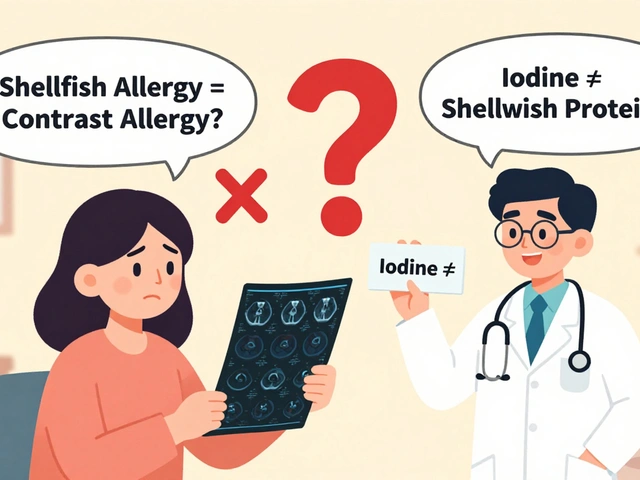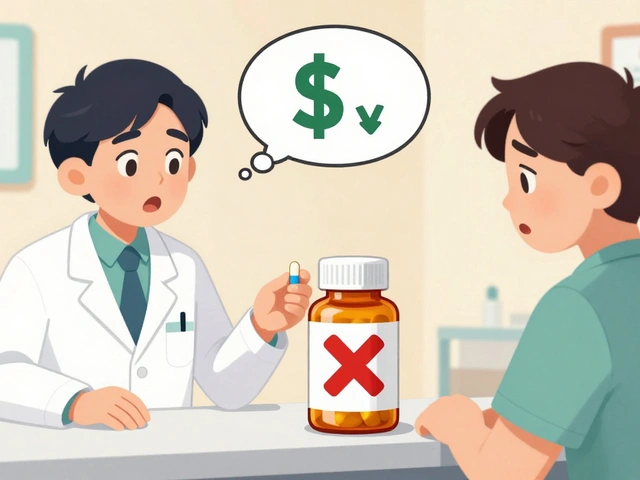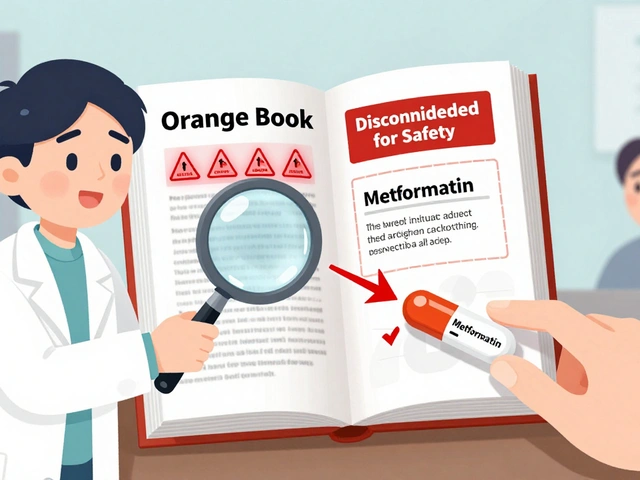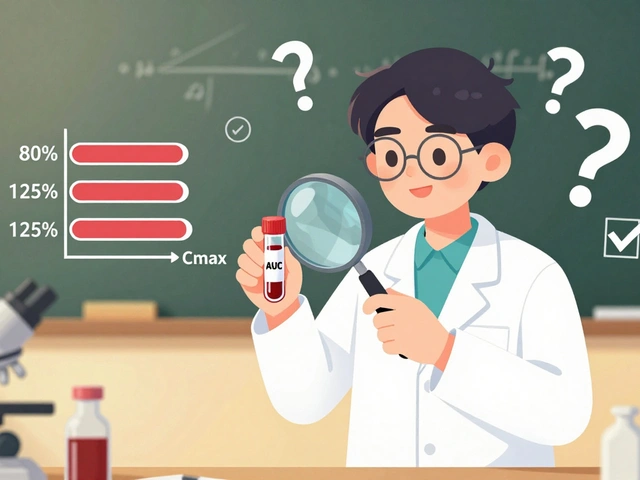Lipitor: Cholesterol Facts, Side Effects, and Tips for Taking Atorvastatin Safely

Lipitor isn’t just a pill you swallow after a doctor’s lecture about cholesterol—it’s been one of the world’s bestselling drugs, making pharmaceutical history and filling pharmacies across the planet. Around the late 1990s and early 2000s, anyone talking about cholesterol seemed to mention Lipitor, even if they had no idea what it actually did. Does lowering cholesterol really mean you’re dodging heart attacks, or are you just helping Pfizer rake in more billions? Let’s break the spell this tiny pill has cast on millions and see where the facts land.
What Lipitor Really Does Beneath the Hood
Slip a Lipitor into your diet, and you’re now officially on a statin. That sounds like the sort of thing a doctor might bark out, but here’s what it really means: Lipitor, or as your pharmacist might call it, atorvastatin calcium, works by blocking a specific enzyme in your liver called HMG-CoA reductase. Imagine your liver is a cholesterol factory bustling 24/7—Lipitor essentially puts a padlock on the front gate, slowing production. Without so much fresh cholesterol being made, your levels in the blood can drop dramatically, which is exactly the result doctors want when your arteries start to clog.
How big a drop? Clinical trials showed Lipitor can knock down so-called “bad” LDL cholesterol levels by up to 60%. That’s not marketing fluff; it’s in the numbers. Take this stat: more than 29 million prescriptions for Lipitor were written in the US in 2012, and the number hasn’t dropped much since. American hearts have stayed loyal. What's even more interesting is how Lipitor was shown to lower the risk of serious coronary events—like heart attacks or strokes—by about 36% in high-risk people, according to the much-cited ASCOT-LLA study.
People sometimes ask, “If Lipitor is so good at lowering cholesterol, does that mean I can just keep eating cheeseburgers?” Not really. Lipitor is powerful, but it’s not magic. The best results show up when the pill is just part of the equation. Pairing the medication with regular exercise, a diet rich in plants and lean proteins, and getting enough sleep can make all the difference—and let you take a lower dose too.
Digging Into Lipitor’s Side Effects and Risks
Now, for all the headlines about Lipitor being a blockbuster, there are always stories on the other side of the fence. Every single prescription comes with a folded-up sheet crammed with side effects, and Lipitor’s aren’t always trivial. Most people swallow the pill with zero real trouble, but about one in five might feel a few muscle aches, known as myalgia. Usually, it’s mild, but every now and then, there are reports about more serious stuff like muscle breakdown, which doctors call rhabdomyolysis. That’s rare—think one or two people out of ten thousand—but if your muscles ache to the point you struggle to walk, you need to call your doctor, no hesitation.
Let’s tackle the numbers in a more practical way. Check out this simple table showing the most commonly reported side effects and their frequencies, drawn from real clinical trial data:
| Side Effect | Approximate Frequency (%) |
|---|---|
| Muscle aches (Myalgia) | 5-10 |
| Abnormal liver tests | 1-3 |
| Digestive issues (nausea, diarrhea) | 1-6 |
| Headache | 2-5 |
| Serious muscle breakdown | <0.1 |
| Memory confusion | Very rare |
Many folks get anxious about statins because they hear tales about memory loss or even diabetes. There’s some truth to this, but it’s not nearly as dramatic as some headlines hint. Very rarely, people (especially those who are already at risk for type 2 diabetes) may see their blood sugar nudge up while on Lipitor, but the tradeoff—like fewer heart attacks—is usually worth it for most patients. If you’re already diabetic or your blood sugar’s borderline, your doctor will keep a closer eye on that number after you start treatment.
Then there’s the grape juice debate—actually, it’s grapefruit. About one in ten people forget and wash their Lipitor down with a glass of grapefruit juice, which can be a real issue. Grapefruit blocks enzymes that break down Lipitor, raising the drug level in your blood and upping the chance for side effects. So if you love citrus, you’ll want to put a pin in grapefruit until your meds change.

Lipitor in Real Life: Who Gets It and How Does It Work With Other Treatments?
Doctors don’t just toss Lipitor at anyone who eats a cheeseburger. Instead, they look at the whole package—your age, blood pressure, other health problems, family history, and whether you’ve already had a stroke or heart attack. People with something called “familial hypercholesterolemia”—a genetic condition where cholesterol shoots up sky high despite a clean diet—often get Lipitor early on, and sometimes even in combo with other drugs if numbers stay stubborn.
For the average person, doctors will check cholesterol at least every five years once you hit your 20s. If your numbers are high, you get advice to tweak what you eat and move more. But when diet and exercise just don’t get the job done, Lipitor or another statin lands on the table. What’s neat is that Lipitor doesn’t only work for people who’ve already had a heart scare. The “primary prevention” crowd—folks who haven’t had an event but have big risk factors—can also get real protective benefits just by nudging LDL levels down.
Curious how Lipitor compares with other cholesterol meds? Here’s the scoop: Lipitor is more powerful than older drugs like pravastatin or simvastatin at equal doses. Some folks respond to lower doses, while others need the full prescription-strength version. Sometimes, doctors combine Lipitor with drugs like ezetimibe for an extra knockdown when LDL stays high, but most will try to max out lifestyle changes first to keep the pill count low.
And speaking of real life, anyone trying Lipitor needs some ground rules. You want to take the pill at the same time every day, usually with or without food (makes life easier). Hydration helps your body process meds, and if you ever notice dark urine, jaundice, or deep muscle pain, you should call your doctor right away. No toughing it out here—those could be signs your liver or muscles aren’t thrilled.
Smart Tips for Managing Lipitor—And Your Cholesterol—Like a Pro
Living with a cholesterol diagnosis can feel like an ongoing chore, but a few clever tweaks can take the stress out of Lipitor. For starters, use a weekly pill organizer if you’re juggling multiple meds. The less you think about what you’ve taken, the more likely you are to stick with the plan. Set an alarm on your phone in the evening, since Lipitor works fine day or night—pick what fits your schedule best and roll with it.
Got questions about what you can and can’t eat? You can basically stick to your favorite foods, just skip the grapefruit. Want to still enjoy your evening glass of wine or beer? One drink here or there is okay, but heavy drinking’s not your friend—too much alcohol can stress your liver when you’re on a statin. And about that exercise: moving helps the meds work better, but don’t jump straight into heavy lifting if you’re new to the gym. Give your body time to adjust; if you notice out-of-the-ordinary muscle pain that sticks around, slow down and tell your doctor if it doesn’t fade.
Noticing odd side effects? Write them down. When you follow up at the clinic, a written log is a goldmine for sorting side effects from random aches. If you see your doctor regularly to check cholesterol, liver, or blood sugar, you’ll keep things in check. Labs matter more than you think—sometimes, problems pop up before you feel anything off. Most people should get cholesterol and liver function checked within two months of starting, then every six to twelve months after that unless something’s up.
Thinking about ditching Lipitor if your cholesterol drops? That’s tempting, but it’s not the best move. The body often bounces right back to high cholesterol within weeks if you stop cold turkey. If you’re desperate to get off, work with your doc—sometimes, dropping to a lower dose or switching to a different statin works if side effects bother you. And remember, Lipitor’s made for long-term use because heart disease doesn’t take days off.
No drug fixes everything, but lipitor isn’t some risky mystery—it’s got a track record stretching back decades, literally saving millions from heart attacks and strokes. That’s real power, so if you’re prescribed it, give it the respect it deserves, tweak your habits where you can, and let the tiny pill do its thing while you live your life with a little more peace of mind.
14 Comments
Kevin Aniston
Statins like Lipitor have become the go‑to prescription for anyone with a cholesterol reading north of the recommended range, and that popularity isn’t just hype.
The drug works by inhibiting HMG‑CoA reductase, the key enzyme that your liver uses to churn out cholesterol, effectively turning down the factory’s production line.
When the liver cuts back, your LDL numbers can drop anywhere from 20 % to 60 %, which translates into a measurable reduction in plaque buildup over years.
Clinical trials such as ASCOT‑LLA showed roughly a 30 %‑plus cut in major cardiovascular events for high‑risk patients on atorvastatin.
But the pill isn’t a magic wand; you still need to watch what you eat, keep moving, and stay on top of other risk factors like blood pressure and smoking.
One of the most common complaints is muscle soreness, called myalgia, and while it’s usually mild, it can be a warning sign if it escalates.
If you ever notice persistent aches, dark urine, or a sudden drop in energy, you should have your doctor check creatine kinase levels right away.
Liver enzymes can also climb a notch, so routine blood work every three to six months is standard practice when you start a statin.
For most people the benefits far outweigh these inconveniences, especially when the alternative is a potential heart attack or stroke.
That said, there are legitimate cases where a statin isn’t the best choice – for example, if you have an active liver disease or a history of rhabdomyolysis.
In those scenarios doctors might opt for a lower dose, an alternative statin, or even a non‑statin lipid‑lowering agent like ezetimibe.
Lifestyle tweaks – swapping out fried foods for grilled veggies, adding a brisk 30‑minute walk most days, and managing stress – can sometimes let you stay on a smaller pill.
Insurance coverage often makes Lipitor the cheapest option, which is why it remains a bestseller despite the arrival of newer drugs.
Ask your pharmacist about generic atorvastatin; it’s chemically identical and usually far cheaper.
Bottom line: take the medication as prescribed, keep up with regular labs, and pair it with a heart‑healthy routine, and you’ll be giving your arteries the best possible defense.
kiran kumar
If you think a cheap pill will fix a junk food habit, you’re buying the pharma hype.
Brian Johnson
Lipitor does lower LDL effectively, but the absolute risk reduction depends on your baseline risk.
For someone with low cardiovascular risk, the number needed to treat can be quite high.
That’s why doctors tailor the prescription to individual profiles.
Side‑effects like myalgia are relatively common, yet serious muscle damage is rare.
Staying informed and getting routine labs keeps the therapy safe.
Jessica Haggard
I’ve seen patients who cut out processed carbs and felt the statin dose drop dramatically, which supports the whole lifestyle‑first message.
Your point about regular liver checks is spot on; catching a slight elevation early can save a lot of trouble.
Overall, the drug works best as part of a broader heart‑healthy plan.
Alan Clark
Statins can be a solid safety net, especially when you’re juggling a busy schedule that doesn’t always allow gym time.
Just remember that the pill isn’t a free pass to binge on fries.
Consistent sleep and a bit of daily movement amplify the benefits.
And hey, the occasional cheat meal won’t undo months of good work.
Mark Anderson
Exactly, a statin is like a backup guitarist – it fills the gap when the lead (your diet) can’t hit the right notes.
But if you keep the rhythm steady, you’ll hardly need the solo.
Plus, a dash of humor in the kitchen makes the whole thing more enjoyable!
Shouvik Mukherjee
When you start Lipitor, ask your doctor for a baseline lipid panel and liver function test.
Schedule follow‑up labs at three months, then every six months, to monitor any shifts.
If muscle aches appear, a quick CK test can differentiate harmless soreness from something serious.
Staying proactive turns a potential side‑effect into a manageable checkpoint.
Ben Hooper
Lab checks are cheap insurance.
They catch problems before they become big.
Marjory Beatriz Barbosa Honório
I began Lipitor after my dad’s heart attack and it gave me the confidence to get back to weekend hikes.
The initial muscle soreness faded after a month, and my LDL dropped from 170 to 95.
I still watch my cheese intake, but I enjoy a slice of pizza now and then without panic.
The key is seeing the med as a partner, not a crutch.
G.Pritiranjan Das
Your story shows the balance works – meds plus mindful eating.
That’s the sweet spot.
Karen Wolsey
Oh sure, just pop a pill and you’re a heart‑healthy superhero, right?
Reality check: even the toughest statin can’t fix a couch‑potato lifestyle.
Better to pair the drug with a jog, not just a Netflix binge.
Trinity 13
When we talk about cholesterol, we’re really talking about the body’s own economy of lipids, a delicate balance between construction and decay.
Statins like Lipitor act as tax collectors, reducing the excess surplus that, if left unchecked, can fund the construction of arterial plaques.
But a society that relies solely on a chemical tax without changing its consumption patterns is bound to face a fiscal crisis.
The data showing a 30‑plus percent drop in events is encouraging, yet it also masks the fact that many patients remain on the drug for decades, paying both financial and physiological costs.
Side effects, even the mild ones, can erode quality of life, turning a preventive measure into a daily reminder of vulnerability.
Therefore, the conversation should shift from “do we need statins?” to “how do we integrate them responsibly into a holistic health strategy?”
Ultimately, the best defense against heart disease is a combination of informed medication use, diet, movement, and a mindset that respects the body’s intrinsic wisdom.
Rhiane Heslop
Statins are a triumph of Western pharma, not a cure‑all.
Don’t let the hype blind you.
Dorothy Ng
Your metaphor of taxes is clever and highlights the trade‑offs.
While meds are useful, the foundation must remain diet and activity.






Write a comment